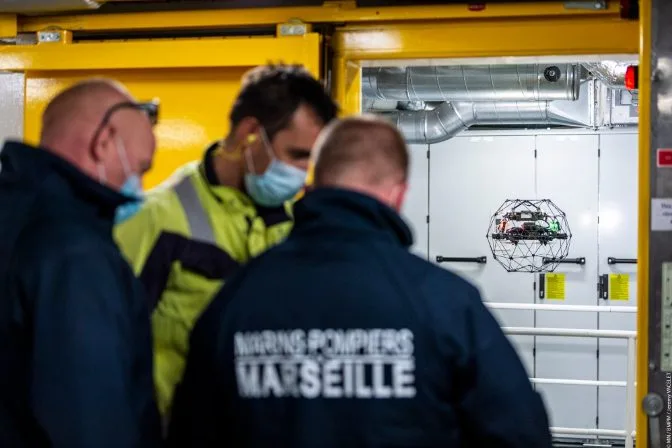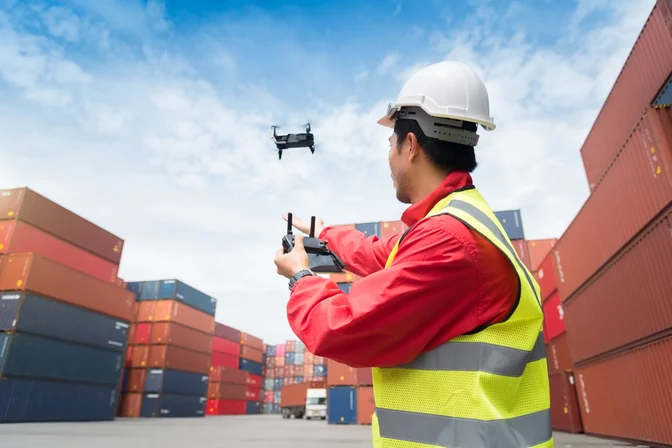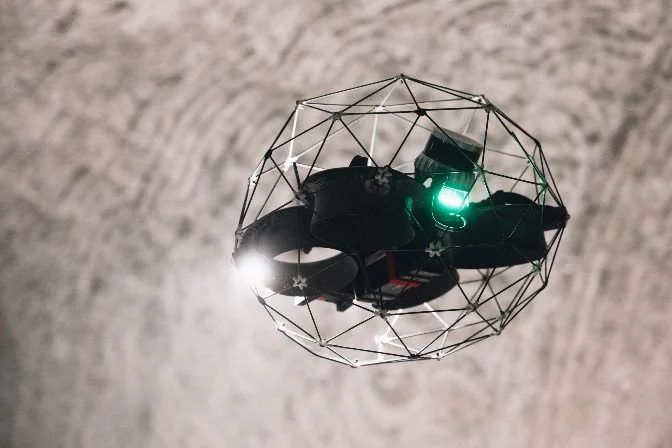The term "maritime drone" refers to remote-controlled devices used in the maritime industry. These drones can be aerial UAVs or underwater ROVs, but this article will focus on airborne applications, which are more common and widely used. Maritime drones have gained significant traction in recent years. In 2021, the European Maritime Safety Agency (EMSA) awarded a €30 million contract to TEKEVER for aerial surveillance of European waters. This highlights the growing reliance on these tools across global maritime operations. Drones are versatile and adaptable, making them ideal for various marine tasks. As their use becomes more widespread, more countries and organizations are likely to integrate drones into their fleets for enhanced efficiency and safety. Maritime drones are deployed in environments that are dangerous, confined, or difficult for humans to access. They help reduce risks, save time, and improve the accuracy of inspections and monitoring tasks. Let's explore some of the key applications: Cargo holds are often challenging to inspect due to their size, limited access, and potential contamination. Drones can quickly scan these areas to detect issues like rust, paint peeling, or residual materials, ensuring compliance with strict regulations. Common contaminants include grains, feed, soil, and sand, which can lead to failed inspections if not addressed. Using drones significantly improves safety and reduces downtime for ships. Fire outbreaks in engine rooms can be extremely hazardous. Drones like the Elios 3 can safely enter such areas to confirm that fires are fully extinguished and assess structural integrity. This allows firefighters to respond more effectively and safely. Inspecting ballast and fuel tanks is both time-consuming and risky. Drones can complete these inspections in a fraction of the time, reducing costs and improving data accuracy. They also enable more frequent checks, enhancing the longevity of critical ship components. Large cranes require regular maintenance, but manual inspections are costly and dangerous. Drones make it easier to identify structural issues and plan repairs without putting workers at risk. Drones are increasingly used for border security, anti-fishing patrols, and monitoring water pollution. With advanced sensors, they can detect illegal activities and enhance situational awareness in vast maritime zones. Maritime drones are now being used for search and rescue missions. They can quickly locate individuals in distress and deploy life-saving equipment, improving response times and reducing risks for first responders. Delivering essential supplies to ships at sea is expensive and time-consuming. Drones offer a cost-effective alternative, enabling quick and efficient deliveries without requiring ships to return to port. Maritime drones provide numerous advantages, including: Maritime drones are transforming how inspections and operations are conducted. Here are a few real-world examples of their impact: A mid-sized ship used a drone to inspect oil tanks, eliminating the need for scaffolding and saving over 15,000 hours of labor. The drone completed the task efficiently and was accepted by the class society. A vessel used a drone for a hull inspection, cutting costs and improving safety. The results were certified by the American Bureau of Shipping, proving the effectiveness of drone technology. A floating production, storage, and offloading vessel used drones to inspect oil tanks in just four days, compared to the traditional two-week process. This improved efficiency and reduced risks for personnel. A rig off the coast of Brazil used drones to inspect 63 tanks in just 14 days, significantly reducing the number of people required on board and improving operational efficiency. Selecting the right drone depends on whether the application is indoor or outdoor. Here are some of the most popular models: The Elios 3 is designed for inspecting confined spaces. Its spherical design and advanced software allow safe navigation through ballast tanks, cargo holds, and engine rooms. It features dual thermal cameras, powerful lighting, and modular payload options. The Matrice 300 RTK is built for harsh conditions and offers long flight times and compatibility with various sensors. It’s ideal for large-scale maritime inspections and surveillance. This helicopter-style drone is suitable for both civilian and military use. It provides 360-degree coverage, high-tech sensors, and a compact design for efficient operations in maritime environments. Many companies offer specialized drone services, including UT-certified operators who can perform ultrasonic thickness measurements. These services are becoming increasingly popular due to their cost-effectiveness and safety benefits. Titanium Parts,Titanium Brass Stainless Steel,Titanium Machining Turning,Titanium Part Custom Machining Shenzhen Yuheng Precision Machinery Co., Ltd. , https://www.yhcncmachiningparts.comWhat is a Maritime Drone?

What Are Maritime Drones Used For?
Cargo Hold Inspections

Engine Room Inspections
Ballast and Fuel Tank Inspections
Port and Ship-to-Shore Crane Inspections
Security and Surveillance
Search and Rescue

Drone to Ship Deliveries
Benefits of Using a Maritime Drone

Case Studies of Maritime Drone Services
Saving 15,000 Hours with a Maritime Drone
Marine Drone Services Save $1 Million
Oil Tank Inspections on an FPSO
Inspecting 63 Tanks in Two Weeks
Types of Maritime Drones
Indoor Maritime Drones
Flyability Elios 3

Outdoor Maritime Drones
DJI Matrice 300 RTK
Schiebel CAMCOPTER S-100
Maritime Drone Services
July 14, 2025